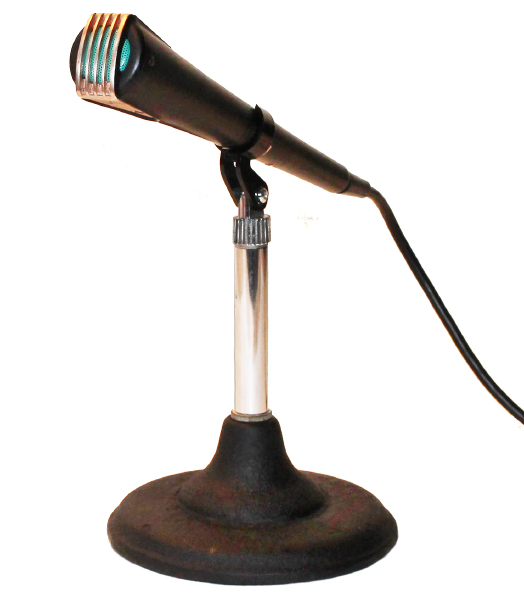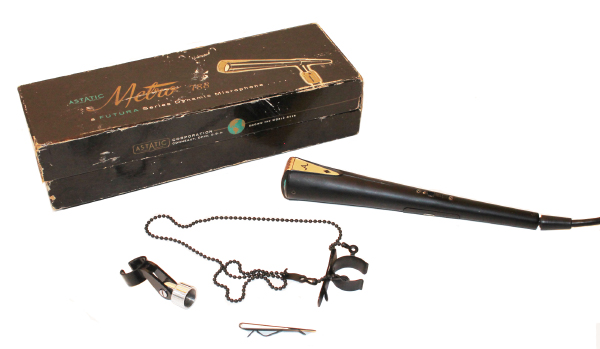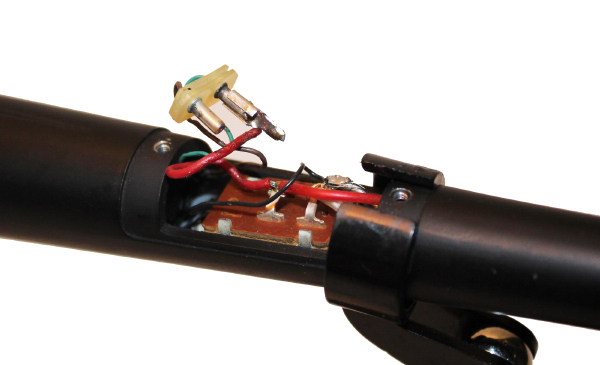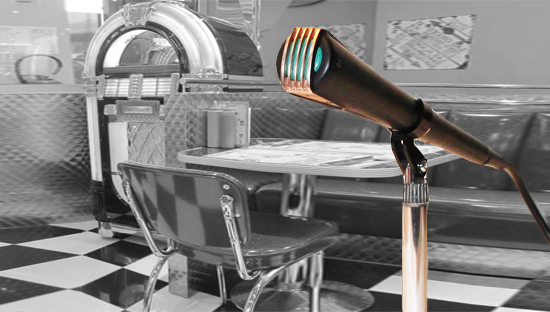I grew up during the CB radio craze of the 1970s. We had CBs in our cars, and in the house, there was a Radio Shack Navaho model base station complete with an Astatic D-104 “Lollipop” microphone.
When the mic collecting bug bit me, I learned that Astatic also manufactured products designed for PA and recording when I spied a handheld beauty called the Metro 788 at an antique store.

Astatic dates back to the 1930s when two Ham radio operators, C.M. Chorpening and F.H. Woodworth, sought better mics to use with their transmitters. They experimented with some condenser types, and soon, fellow amateurs showed interest, so the two fledgling entrepreneurs formed a partnership and went into the microphone business, incorporating in Youngstown, OH in 1933.
Astatic soon introduced its first production model, the Crystal D-104 (which was manufactured until 2001), and also added phonograph cartridges to its line. During World War II, the company produced a variety of items for the military, including mics, phono cartridges and needles, and co-axial cable connectors. Astatic was also one of the largest manufacturers of hydrophones (underwater mics) for the U.S. Navy.
In addition, the company also perfected and produced a static discharger that dissipated static electricity that accumulated on the wings of military airplane wing surfaces due to friction during flight.
Astatic moved north to Conneaut, OH, in late 1944 and continued to specialize in communications mics. In 1988, the Conneaut Audio Devices (CAD) division was formed to address the needs of live and studio markets, and in 2009, the company officially changed its name to CAD Audio, continuing the Astatic name for the install products.
The amateur and CB product division was eventually sold to Barjam LLC, which still manufacturers mics under the Astatic name.
Family Of Three
The Metro 788 is one of three mics in a handheld series introduced in the late 1950s. All three are physically similar and mainly differ in terms of color scheme and frequency response. The Metro, a dynamic type, is the basic model, with a black body and a striking gold-brushed grille that protects a light green perforated metal windscreen. It has a limited but useful frequency response of 60 Hz to 13 kHz. An ad in a 1962 electronics catalog states, “the Metro has a wide range for voice and music reproduction in PA, recording and TV.”

The mid-level model in the series is the Tempo 888, with brushed chrome accents and a frequency response of 50 Hz to 15 kHz range. Ad copy touting the 888: “High fidelity and advanced styling for applications in color TV and deluxe PA systems.”
The top-of-the-line Vogue 988 has similar aesthetics as the 788 (black and brushed gold), with a frequency response of 40 Hz to 20 kHz. “Beauty and high fidelity for the most exacting color TV and broadcast requirements,” said the print ad for the 988.
All three have a die-cast alloy housing with a built-in on-off switch mounted flush with the mic body so it can’t be accidentally turned off during use. Each unit also came with an SA-8 desk-floor stand mount adapter (that’s marketing speak for a mic clip), a lavalier clip with neck chain, a cable management belt clip, and an attached 20-foot cable (balanced) that was unterminated.
While today we’re used to super-miniature lav mics with wireless beltpacks, back in the day if you wanted to be “hands free” you hung a mic from a neck chain and dragged the cord around. By the way, the included lav clip and neck chain are finished in the same satin black as the mic and are non-reflective, making them suitable for use in television broadcasts.
All three models also offered selectable impedances (low and high). Changing the impedance involves removing a cover on the mic body and slipping the red wire’s connector from one pin to the other.

The Metro 788 is yet another beautiful example of Art Deco styling, and it’s one of the best-looking handheld mics I’ve ever seen. It always draws positive comments about it’s looks when I show folks my mic collection.
Astatic Metro 788 Specs
Transducer Type: Non-metallic diaphragm dynamic
Polar Pattern: Omnidirectional
Frequency Response: 60 Hz to 13 kHz
Sensitivity: -55 dB
Nominal Impedance: Switchable low or high
Size: 8.7-in x 1.5-in
Net Weight: 8 ounces
List Price In 1959: $79.50




















